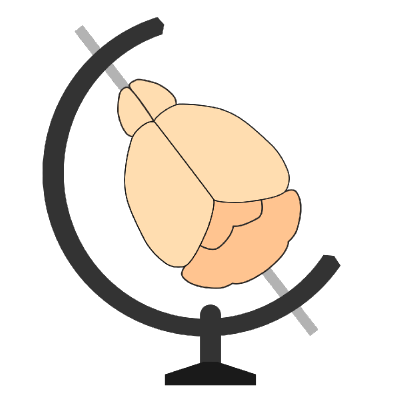Registration parameters#
To change how the image registration performs, you can change the options that are passed to the registration backend.
NiftyReg#
If using the NiftyReg backend, the following options can be changed:
Affine registration#
--affine-n-stepsRegistration starts with further downsampled versions of the original data to optimize the global fit of the result and prevent “getting stuck” in local minima of the similarity function. This parameter determines how many downsampling steps are being performed, with each step halving the data size along each dimension. Default: 6--affine-use-n-stepsDetermines how many of the downsampling steps defined by-affine-n-stepswill have their registration computed. The combination--affine-n-steps 3 --affine-use-n-steps 2will e.g. calculate 3 downsampled steps, each of which is half the size of the previous one but only perform the registration on the 2 smallest resampling steps, skipping the full resolution data. Can be used to save time if running the full resolution doesn’t result in noticeable improvements. Default: 5
Freeform registration#
--freeform-n-stepsRegistration starts with further downsampled versions of the original data to optimize the global fit of the result and prevent “getting stuck” in local minima of the similarity function. This parameter determines how many downsampling steps are being performed, with each step halving the data size along each dimension. Default: 6--freeform-use-n-stepsDetermines how many of the downsampling steps defined by--freeform-n-stepswill have their registration computed. The combination--freeform-n-steps 3 --freeform-use-n-steps 2will e.g. calculate 3 downsampled steps, each of which is half the size of the previous one but only perform the registration on the 2 smallest resampling steps, skipping the full resolution data. Can be used to save time if running the full resolution doesn’t result in noticeable improvements. Default: 4--bending-energy-weightSets the bending energy, which is the coefficient of the penalty term, preventing the freeform registration from over-fitting. The range is between 0 and 1 (exclusive) with higher values leading to more restriction of the registration. Default: 0.95--grid-spacingSets the control point grid spacing in x, y & z. Positive values are interpreted as real values in mm, negative values are interpreted as the (positive) distances in voxels. Smaller grid spacing allows for more local deformations but increases the risk of over-fitting. Default: -10--smoothing-sigma-floatingAdds a Gaussian smoothing to the floating image (the one being registered), with the sigma defined by the number. Positive values are interpreted as real values in mm, negative values are interpreted as distance in voxels. Default: -1.0--smoothing-sigma-referenceAdds a Gaussian smoothing to the reference (the one being registered to) image, with the sigma defined by the number. Positive values are interpreted as real values in mm, negative values are interpreted as distance in voxels. Default: -1.0--histogram-n-bins-floatingNumber of bins used for the generation of the histograms used for the calculation of Normalized Mutual Information on the floating image. Default: 128--histogram-n-bins-referenceNumber of bins used for the generation of the histograms used for the calculation of Normalized Mutual Information on the reference image. Default: 128
